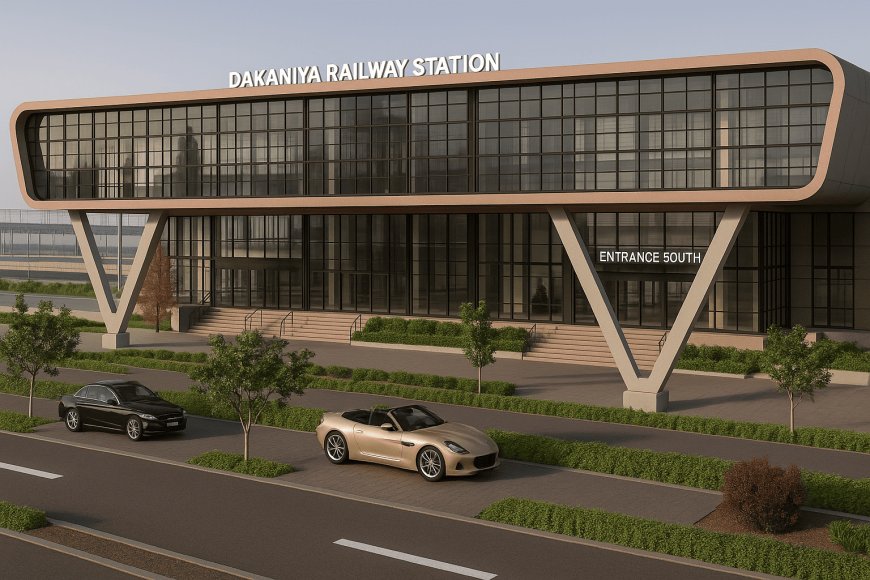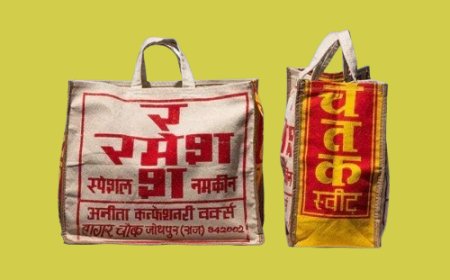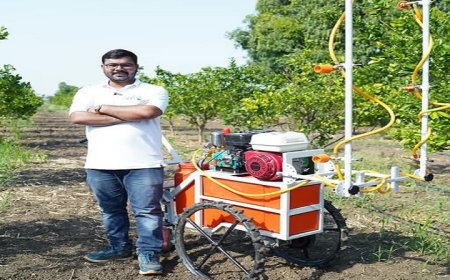Dakaniya Talav Railway Station Renamed as New Kota Railway Station | Kota Rajasthan Update
Kota's Dakaniya Talab Railway Station is being renamed as New Kota Railway Station. Discover what this change means for travelers, locals, and the future of regional connectivity.

In a move aimed at improving clarity and convenience for railway passengers, the Dakaniya Talav Railway Station in Rajasthan’s Kota district is set to get a brand new name - "New Kota Railway Station". This decision, recently approved by the railway authorities, marks another step in the ongoing transformation of the Indian Railways network and aligns with efforts to make station names more intuitive for commuters. While it may appear to be a simple name change on the surface, this move carries deeper significance, especially for those familiar with Kota’s growing role as a key junction in Rajasthan. The renaming reflects the city's changing infrastructure and its importance in regional travel, education, and commerce.
The Dakania Talav railway station will soon be known as 'New Kota'
A Closer Look at Dakaniya Talav Railway Station
Located in the southern suburbs of Kota city, Dakaniya Talab Railway Station has served as a modest yet functional stop for passenger and express trains. While it doesn’t witness the same volume of traffic as the main Kota Junction, it caters to a steady stream of daily travelers, including students, working professionals, and residents. This station has historically been used as an alternate boarding point for passengers looking to avoid the crowd at Kota Junction. Over time, it has developed a niche importance in managing the overflow from the city’s growing rail passenger demand.
For those looking for logistical or postal details, Dakaniya Talav Railway Station's pin code is 324007, which helps in identifying the exact locality for deliveries, navigation, and postal communication.
Why the Renaming? From Dakaniya Talav to New Kota Railway Station
The decision to rename the station came after repeated appeals from residents and public representatives who highlighted the confusion among travelers, particularly those visiting the city for the first time. The name “Dakaniya Talav” often didn’t resonate with outsiders, leading to misrouting and delays. With Kota being a national education hub, thousands of students and parents visit the city each year. Having a station name that links to the city helps improve their navigation. The new name, New Kota Railway Station, immediately signals to passengers that the station is part of Kota’s urban transport network.
According to recent reports in Indian Railways news, the renaming was approved by the Ministry of Railways and will be implemented soon. This includes updating signage at the station, changes in the digital reservation system (IRCTC), train route announcements, and Google Maps.
What the Name “New Kota” Signifies
The new identity is more than just cosmetic. It serves a practical purpose: helping travelers distinguish between the city's two main stations. While Kota Junction remains the central hub, New Kota Railway Station (formerly Dakaniya Talav) will provide a complementary identity. The rebranding not only adds to commuter clarity but also supports the city’s positioning as a modern, well-connected hub in Rajasthan’s railway map. It reflects the vision of transforming Kota into a smart city with better accessibility and improved infrastructure.
Notably, the distance from Dakaniya Talav Railway Station to Kota Junction is approximately 10 kilometers, making it a convenient secondary access point for travelers. This short distance offers flexibility in travel planning, especially for those looking to avoid crowded junctions.
How This Will Impact Travelers and the City
For those who regularly commute in and out of Kota, the renaming might initially cause minor adjustments — especially in GPS-based travel apps or train booking portals. However, the long-term benefits outweigh these short-term hiccups. The change will help:
- First-time visitors, including students and parents arriving for coaching institute admissions, who often search for details like Dakaniya Talav Railway Station pin code for accurate navigation.
- Parcel and logistics companies, which rely heavily on precise destination naming, including data such as the Dakaniya Talav Railway Station to Kota Junction distance to plan efficient delivery routes.
- Tourists visiting heritage sites and natural attractions near Kota, who depend on updated station names and travel information.
- Railway staff, who deal with queries and assistance at busy counters, can provide clearer guidance based on standardized station names.
As Kota’s population and educational draw continue to grow, streamlining travel communication becomes essential. This move aligns with the broader goals of Indian Railways modernization.
Kota’s Growth and the Need for Improved Infrastructure
Kota has been a bustling educational, industrial, and tourism center. The city attracts thousands of students from across India each year, thanks to its coaching institutes. Additionally, Kota is emerging as a destination for eco-tourism, with places like Chambal Garden, Kishore Sagar Lake, and the Seven Wonders Park. To keep pace with this growth, the city’s transport infrastructure — especially its rail connectivity — must evolve. The renaming of Dakaniya Talab to New Kota Railway Station is a small but important step in this larger development narrative. The move may also open up opportunities for further upgrades to the station, such as better amenities, smarter ticketing solutions, and the potential introduction of new routes under the Indian Railway Station Redevelopment Program.
Final Thoughts: A Small Change, Big Impact
The renaming of Dakaniya Talab Railway Station to New Kota Railway Station may seem like a minor administrative update, but it carries far-reaching benefits. It reflects a growing need for clarity, efficiency, and better user experience within Indian Railways — especially in rapidly developing cities like Kota. For travelers, this means a more intuitive travel experience. For the city, it marks another step toward modernization and improved urban mobility. And for Indian Railways, it’s yet another chapter in its journey toward becoming more passenger-friendly and future-ready.
What's Your Reaction?
 Like
0
Like
0
 Dislike
0
Dislike
0
 Love
0
Love
0
 Funny
0
Funny
0
 Angry
0
Angry
0
 Sad
0
Sad
0
 Wow
0
Wow
0
















































































